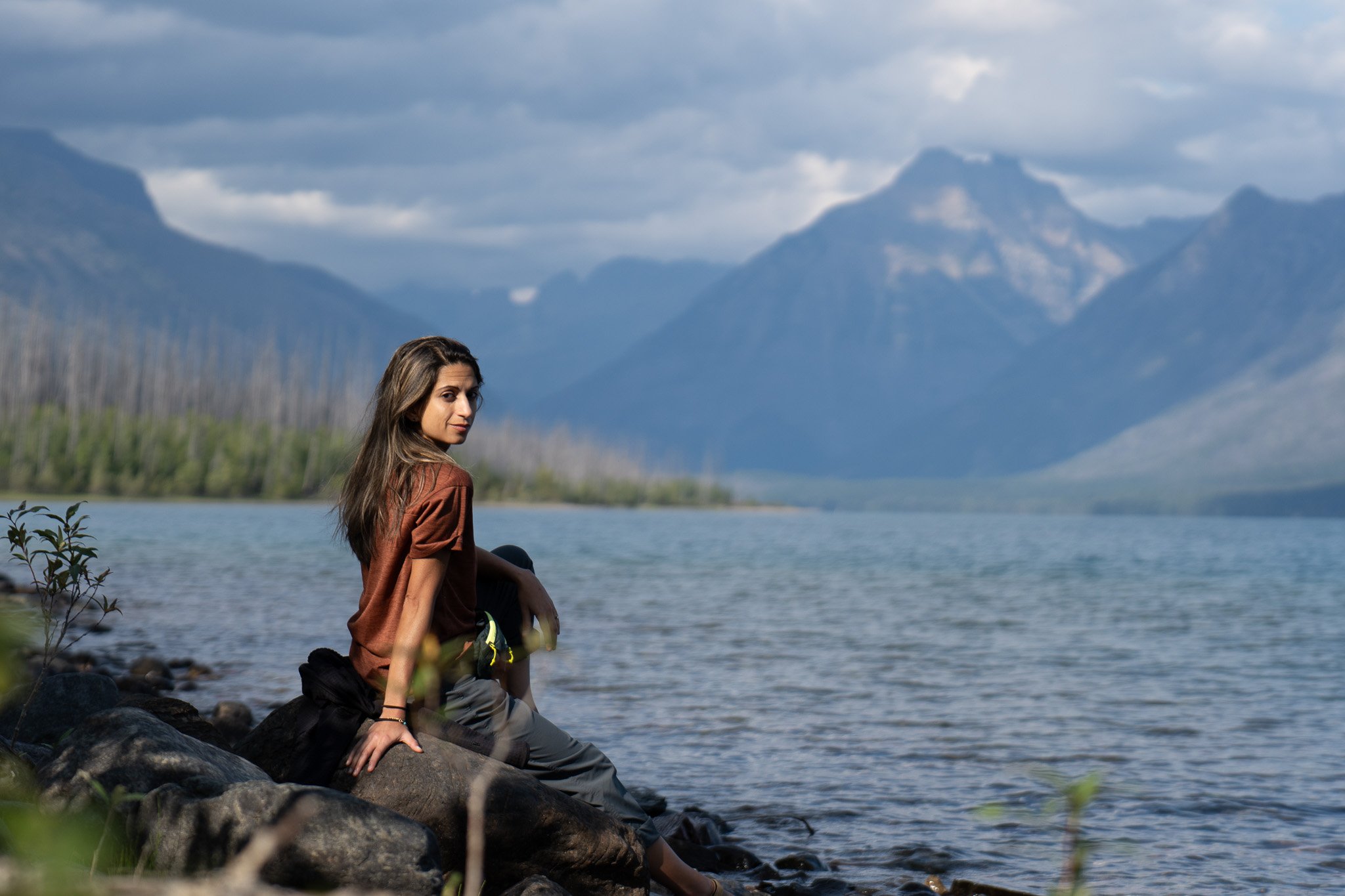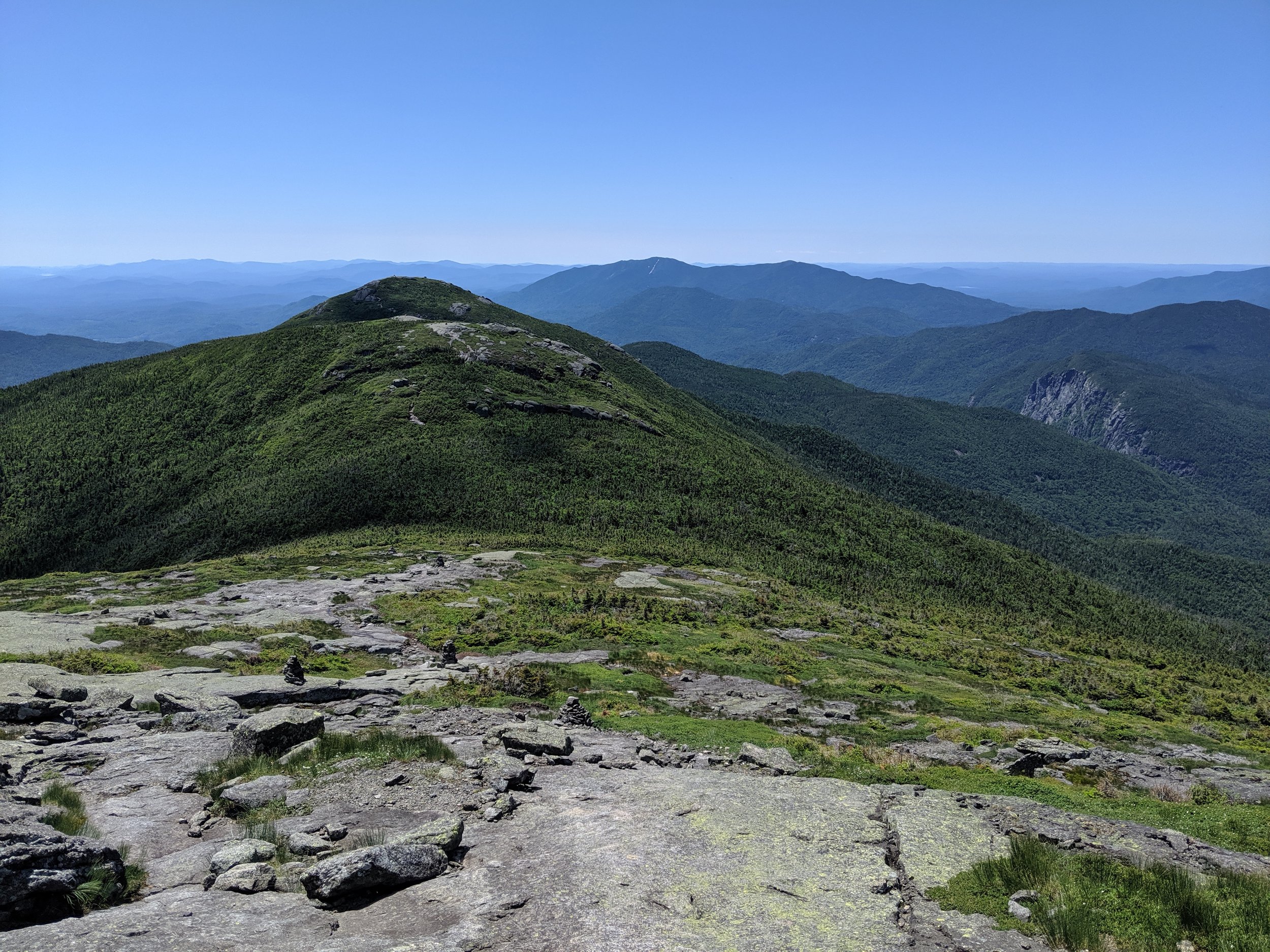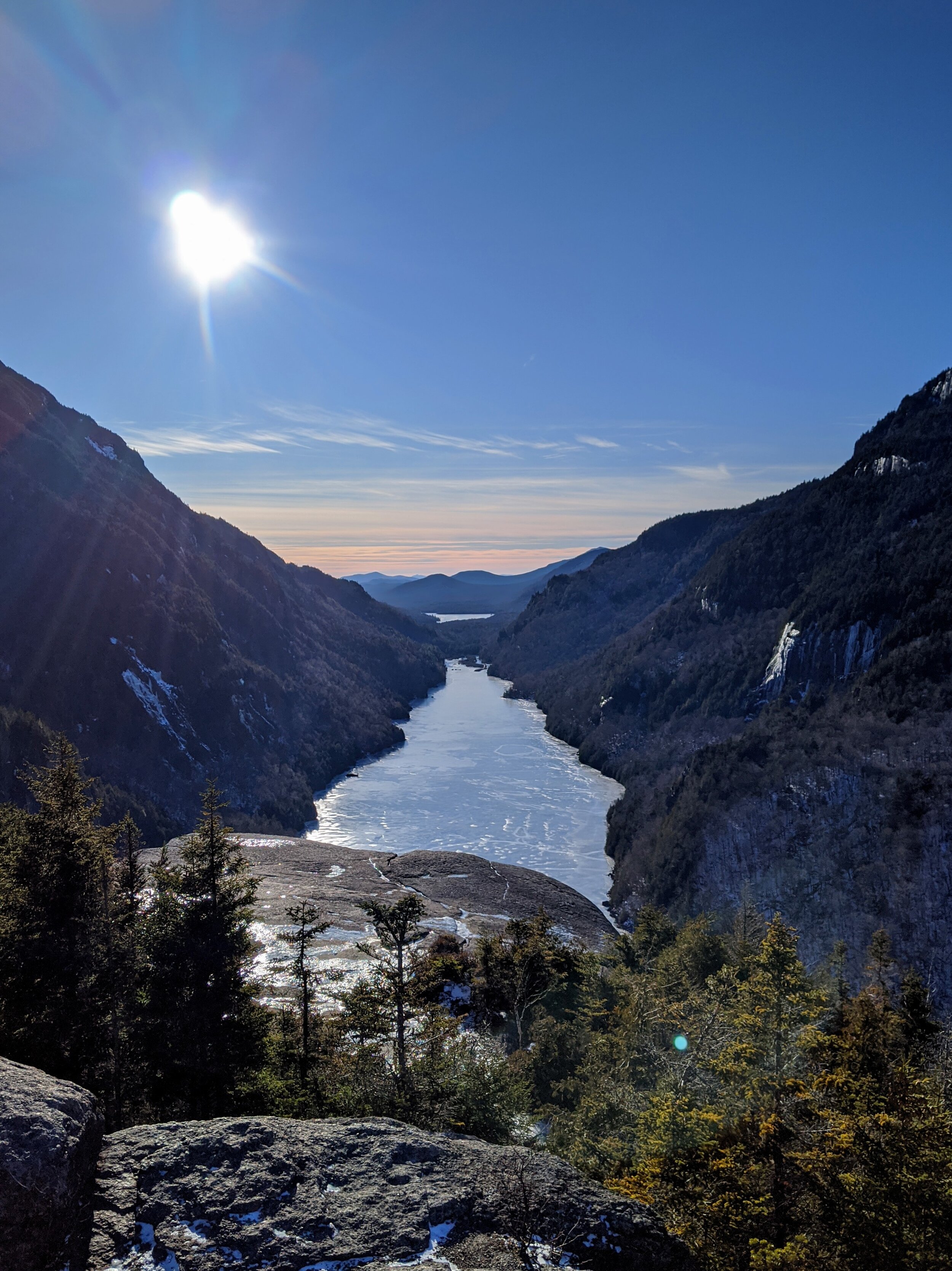A Week in Glacier National Park

Day 1 – Arrival in the Big Sky State
Landing in Kalispell’s Glacier Park International Airport felt like stepping into a postcard. The jagged peaks of the Rockies loomed in the distance, their grandeur promising adventure. Our first mission: acquire the essentials. Camp fuel and bear spray from REI, because nothing says ‘welcome to Montana’ like being reminded you might become a light meal for a grizzly.
After securing our supplies, we drove through the flat Montana plains with the mountains ever in view. It was getting late, so we checked into the Mini Golden Inns Motel in Hungry Horse, MT, right outside the gates of Glacier National Park. If there’s ever been a town with a name that made you want to order a double cheeseburger, this was it.
Day 2 – Settling In at Fish Creek
After checking in with the park rangers, Fish Creek Campground became our home for the next few nights. We set up camp beneath towering pines, as their scent mixed with the crisp mountain air. After some quick camp chores, we made our way to Lake McDonald, the park’s largest lake, an enormous expanse of crystal-clear water flanked by dramatic peaks.
The Lake McDonald Trail offered a peaceful, easy stroll, with every step revealing a different angle of the water’s surface, which reflected the sky in a mesmerizing dance of blues and silvers. Along the shoreline, colorful pebbles, a hallmark of the lake, were scattered like nature’s own mosaic, polished smooth by centuries of glacial movement. We passed through pockets of dense forest, where the chirping of birds filled the air, and occasional rustling in the underbrush hinted at the presence of hidden wildlife.
We were just meandering from the campsite, so we weren’t counting miles, but at some point, we came to this rocky outcropping that jutted away from the dense trees and out into the lake. We decided that this would be a great spot to spend a few hours watching the clouds pass over the mountains.
Day 3 – Going-to-the-Sun Road, Waterfalls, and the Disappearing Glaciers
The next morning we got up early to begin our drive along the ‘Going-to-the-Sun’ Road. More than just a road, it is an engineering marvel that slices through the heart of Glacier National Park, winding up steep cliffs, hugging the sides of mountains, and offering some of the most jaw-dropping views in North America.
As we ascended, the towering peaks stretched endlessly, their rugged faces carved by ancient ice. The valleys below were a vibrant tapestry of alpine meadows, dotted with wildflowers in hues of purple, yellow, and red, while the turquoise rivers sliced through the landscape, their waters carrying the icy remnants of the region’s vanishing glaciers.
Every turn offered another postcard-worthy vista, sheer cliffs plunging into emerald lakes, cascading waterfalls tumbling down rock faces, and distant summits still dusted with snow despite the warmth of August.
We passed the Logan Visitor Center straddled atop the Continental Divide, and it was packed. We decided to continue on, and our first hike of the day would be to St. Mary Falls and Virginia Falls.
The hike to St. Mary Falls was a gentle descent through a burnt forest, the skeletal remains of charred trees standing in stark contrast to the undergrowth that had reclaimed the land. The trail followed the southeastern edge of St. Mary Lake, where glacial meltwater collected from narrow streams, turning the water a shocking shade of turquoise.
Arriving at St. Mary Falls, we were immediately struck by its raw power. Water thundered over rock ledges, crashing into the pool below in a continuous roar.
From there, we pressed on to Virginia Falls. This portion of the trail grew steeper, winding through lush forest and opening up to panoramic views of the surrounding peaks. Virginia Falls was even taller and more dramatic than its sister waterfall, plunging down a sheer rock face in a spectacular white cascade. Mist hung in the air, catching the sunlight in a soft, golden haze.
These little Ground Squirrels were everywhere.
After making our way back to the jeep, we arrived at an overlook to see what remains of Jackson Glacier. It was a sobering sight. In 1850, there were over 150 glaciers in what is now Glacier National Park. Today, only 25 remain, and even these are retreating at an alarming rate. It was impossible not to feel a deep sense of looming dread as these glaciers, ancient and powerful, were slowly dying as we stood there and watched.
Glacier National Park itself was established as a testament to the growing conservation movement of the early 20th century. When early explorers and settlers arrived, they marveled at the sheer epicness of the ice-carved peaks and the pristine lakes, recognizing that this was a place worth preserving. The park became America’s tenth national park, a wild sanctuary where grizzlies still roam and mountain goats perch precariously on craggy cliffs. But climate change now threatens this landscape, reshaping it before our eyes.
Returning back to Logan Pass, now a bit less crowded, we set off on the Hidden Lake Trail. This trail began as an easy boardwalk over delicate alpine tundra, winding through vibrant meadows filled with wildflowers and the occasional lazy marmot sunning itself on a rock. The initial portion of the trail offered breathtaking panoramic views, with peaks rising in all directions like the jagged spine of the Earth.
As we climbed higher, we encountered mountain goats grazing among the rock, their thick white coats blending in with the lingering snow patches. Eventually, the trail led us to a dramatic overlook of Hidden Lake. Perhaps one of the most epic vistas we had ever seen.
We lingered there a while, so still that a mountain goat eventually wandered up to us to see what we were looking at. It all seemed pretty routine for him.
Just as we were about to turn back, off in the distance, we watched in awe as a momma grizzly roamed the steep hill as her two cubs played among the boulders, moving effortlessly through the rugged terrain.
I regretted not carrying my zoom lens with me that day. This is the best shot I could get with my phone digital zoom.
My hand rested on the bear spray clipped to my belt and I wondered if they decided to come our way, would this tiny little spray can actually do anything to deter them, or would it only serve to provide them with a well-seasoned snack?
We didn't stick around to find out.
Day 4 – The Highline Trail and the Storm That Almost Got Us
After a restful night at camp, we journeyed back to Going-to-the-Sun Road to find the Highline Trail, perhaps Glacier National Park’s most famous hike, and for good reason. The trail began at Logan Pass, following the Continental Divide as it winds along high among exposed cliffs, across vast alpine meadows, and through rugged mountain-top wilderness.
The first stretch, known as the Garden Wall, immediately introduced us to both the beauty and the danger of this trail. A narrow, ledge-like path clung to the steep mountainside, with nothing but a cable to hold onto and a sheer drop into the valley below. The sense of exposure is both exhilarating and unnerving, but the view of miles of jagged peaks stretching into Canada made it worth it.
As the cliff pass narrowed, each step became an act of calculated bravery as I found myself thinking, “Okay, if Ariana fell here, how would I get to her?”
As we progressed, we found ourselves enveloped in a world of wildflowers and open sky. The air smelled of pine and fresh mountain breeze. The further we went, the wilder it became, Rocky Mountain mule deer wandered alongside us and even joined us for a mile, seemingly guiding us to the end of the hike.
About ten miles in, we reached the Granite Park Chalet, a historic stone refuge perched on a high ridge. Just as we caught our breath, rangers warned of an approaching storm. “Not much time,” the ranger said. “You might want to hunker down here in the shelter or head back down now.”
With dark clouds gathering in the distance, we debated our options. We chose to race against the weather, fully aware that this might be a choice we would regret.
The descent was a test of endurance, with the storm gaining on us. Thunder cracked through the mountains, and gusts of wind howled through the trees. By the time we reached the road, we seemed to have escaped the worse of it. After catching a shuttle back to Logan Pass, we drove back to the campsite.
As we drove out, we found where the brunt of the storm had hit as fallen trees blocked the one and only way out of the mountain pass. Thankfully, the National Park Service quickly cleared a path, with the speed of a NASCAR pit crew, proving yet again that they’re the unsung heroes of the wild.
Day 5 – Trail of the Cedars and Avalanche Lake
Day 5 was intentionally left open to check out anything that caught our eye on the days prior. And that one thing was this beautiful old growth forest we had passed through.
The Trail of the Cedars felt like stepping into a prehistoric world. Towering western red cedars stretch impossibly high, their thick trunks covered in moss as their scent filled the damp air. The boardwalk wound through this primeval forest, where sunlight filtered through the dense canopy, casting an emerald glow on the forest floor.
At the trail’s halfway point, we veered onto the crowded Avalanche Lake Trail. The hike began with a gradual ascent alongside Avalanche Creek, a roaring, ice-cold torrent tumbling over rocks smoothed by centuries of glacial runoff. As we climbed higher, the forest thinned, revealing glimpses of distant peaks.
When we finally arrived at Avalanche Lake, the scene before us was almost otherworldly. Sheer cliffs rose dramatically from the water’s edge, waterfalls cascading down their faces in silvery ribbons. The lake itself was an impossible shade of greenish-blue. Despite the crowds, there was a hush of reverence among the hikers, as if we all recognized the privilege of standing in such a place.
That night back at camp, we marveled at a night sky unpolluted by city lights. The Milky Way stretched across our atmospheric dome in a dazzling display of light, with the amount of stars almost seeming to outcompete the darkness between them. It was, without a doubt, the most stars we had ever seen in our lives. We stared at them all until our necks hurt.
Day 6 – Morning Panic Camping Fiasco
The next morning, however, our wilderness wandering was wrecked by a logistical wrong turn. I had fallen into a camp reservation trap I had fallen into once before years ealier at Acadia National Park.
Hear me out. When reserving campsites, some campgrounds operate like hotels, with check-in/check-out days. Others are reserved by the night, meaning if you plan on leaving Sunday, Saturday is the last night you reserve. When I planned out this whole trip, I, in my infinite wisdom, thought we had one more night.
We did not.
So after a final breakfast in camp, we had no choice but to pivot to Plan B: heading to Kalispell a day early. It wasn’t the wilderness we had planned, but after a week of hiking, the promise of a hot shower at the Kalispell Grand Hotel was a welcome consolation prize.
Day 7 – Exploring Kalispell
Kalispell had the feel of a sleepy old western town, where history still clung to its streets like dust on a cowboy’s boots. Founded in 1891 as a railway hub for the Great Northern Railway, it was once the heart of commerce in northwest Montana. Today, its Main Street still bore the echoes of its past, lined with preserved 19th-century buildings that now housed cafes, art galleries, and cowboy outfitters catering to modern-day explorers.
As we strolled down its main street, I imagined the echoes of horses trotting through town, or drinking from troughs, tied up outside the corner saloon. Despite modern touches, Kalispell still felt like the last vestige of the Old West, where the rugged independence of its settlers had left a lasting imprint.
As the sun dipped below the horizon, we retreated to the historic Kalispell Grand Hotel, a landmark that had stood since 1912. Its creaky wooden floors and old-world charm made it the perfect place to unwind and reflect on our journey. The past was very much alive here, not just in museums or photographs, but in the town itself.
Homeward Bound
We lingered over a final breakfast at the Hotel, sipping coffee in its vintage dining room. The hotel’s worn wooden floors creaked beneath our worn-out hiking boots as we made our way to the lobby, feeling a twinge of reluctance to leave behind this place.
As we drove to the airport, Kalispell’s sleepy streets gradually gave way to open highways, the jagged peaks of Glacier National Park still towering in the rearview mirror like silent sentinels.
As our plane ascended, we pressed our faces to the window, watching the rugged landscape shrink beneath us. The rivers, forests, and mountains we had explored now seemed like mere brushstrokes in a vast watercolor masterpiece.
The trip had been a perfect blend of excitement, awe, and a few missteps. But that’s what adventure’s all about.
Until next time, Montana. Keep those trails wild.































